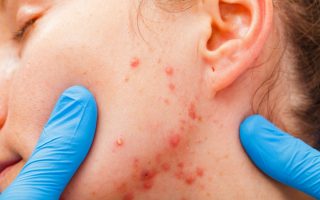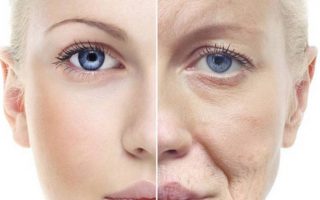There are different skincare ingredients that can give you real beautiful skin, they include, beta-hydroxy acids, alpha-hydroxy acids, kojic acid, hydroquinone, copper peptide, retinol, etc. Learn how they affect wrinkles, fine lines, age spots, and other skin issues. In today’s skincare products, what components do you what? On the market are several skincare items. You’ll learn about the newest skincare compounds in this paper. You may also ask your dermatologist or a skin specialist at your local salon or cosmetic shop for advice.
Alpha-hydroxy acids (AHAs)
Recent years have seen an increase in the use of over-the-counter skincare products using alpha-hydroxy acids (lactic, tartaric, and citric). Alpha-hydroxy acid creams and lotions may help reduce fine lines and wrinkles, uneven pigmentation, and age spots. Alpha-hydroxy acids may cause minor discomfort and sun sensitivity. Apply sunscreen first thing in the morning to prevent sunburn. Start with an AHA product containing 10% to 15% AHA to avoid skin sensitivity. Starting with every other day application, you may progressively increase the frequency to daily.
Polyhydroxy acids
Like alpha-hydroxy acids, but without the stinging or burning.
Beta-hydroxy acid (salicylic acid)
Salicylic acid removes damaged skin cells and boosts the color and texture of UV ray-dead skin. Heal acne by penetrating oil-filled hair follicle openings. Salicylic acid is included in several skincare products, and some are OTC, while others need a prescription. Alpha-hydroxy acids irritate the skin more than Salicylic acid. It improves skin texture and color comparable to alpha-hydroxy acid products.
Hydroquinone
So-called bleaching lotions or lightning treatments include hydroquinone. Dark spots caused by aging, pregnancy, or hormone treatment may be lightened with these products (melasma or chloasma). Hydroquinone is included in OTC skincare products like AMBI®Fade cream. If your skin doesn’t react to over-the-counter treatments, your doctor may prescribe a cream with a more potent dosage of hydroquinone. Sun exposure promotes skin hyperpigmentation; hence hydroquinone is sometimes coupled with sunscreen. Allergy testing is advised for hydroquinone-based products. If you’re sensitive to hydroquinones, try kojic acid-based products.
Kojic acid
Colorectal disorders and age spots may be treated with kojic acid. Kojic acid, discovered in 1989, acts like hydroquinone. Kojic acid, a fungus-derived lightning agent, decreases melanin formation (brown pigment). It may make your skin more prone to sunburns with repeated usage.
Retinoids
Retinol, retinal aldehyde, and retinyl esters are examples of retinoids. Skin texture, tone, and color are improved as well as moisture.
Many over-the-counter “anti-aging” skincare treatments include retinol derived from vitamin A. Treatment with prescription Renova®, and Retin-A® creams contain a more robust form of retinol called Tretinoin. Over-the-counter retinol is an attractive option for skin too sensitive for Retin-A®. For more information, visit www.retinol.com. This tiny molecule of vitamin A can travel into the skin’s dermis and discover collagen and elastin. Resveratrol improves skin texture, tone, and moisture while decreasing fine lines and wrinkles. Also known as retinyl palmitate, it is a derivative of retinol.
L-ascorbic acid
Vitamin C (ascorbic acid) is the only type of vitamin C found in the skin. However, only L-ascorbic acid is beneficial in skincare products. Wrinkles appear when the skin’s collagen production slows with age and exposure to the sun. The C vitamin enhances collagen formation, diminish wrinkles, scars, and fine lines. L-ascorbic acid may help photodamaged skin look better, according to research. These adverse effects usually fade away after a few uses of vitamin C lotions.
Hyaluronic acid
This ingredient is often used alongside vitamin C to help penetrate the skin more effectively. Anti-aging properties of hyaluronic acid (also known as a glycosaminoglycan) are often cited. The “key to the fountain of youth” may have been hyaluronic acid. It’s present in juvenile skin, various tissues, and joint fluid in humans and animals. Hyaluronic acid is a lubricating and cushioning component of connective tissues. Hyaluronic acid is lost as we age, and Hyaluronic acid levels may be impacted by diet and smoking. Hyaluronic acid skin care products often address wrinkled skin and may help hydrate and tighten the skin.
Copper peptide
Even though it has only been on the market since 1997, copper peptide is commonly touted as the most efficient skin regenerator. Why: According to research, copper peptide is an antioxidant that increases glycosaminoglycan formation, collagen, and elastin synthesis (think hyaluronic acid, for example). Copper-dependent enzymes have also been demonstrated to enhance the body’s natural tissue-building mechanisms. Compared to other anti-aging skincare products, this one works faster to firm, smooth, and soften skin. Copper peptides have been shown to eliminate damaged collagen and elastin from the skin and scar tissue in tests.
Alpha-lipoic acid
Alpha-lipoic acid is known as “the miracle in a jar” due to its anti-aging properties. The hemp seed extract is a newer, ultra-potent antioxidant that helps prevent and heal skin damage. Being soluble in water and oil makes alpha-lipoic acid a “universal antioxidant.”Alpha-lipoic acid is regarded as the most effective antioxidant against free radicals because of its property. With alpha-lipoic acid, fine wrinkles are smoothed, and skin is glowing.
DMAE (dimethylaminoethanol)
It’s because to DMAE why fish is called “brainfood.” DMAE is found in anchovies, salmon, and sardines, as well as in the brain itself. Acetylcholine is required for healthy brain function and is increased by DMAE. Topical use of DMAE reduces fine lines and wrinkles by up to 80%.


